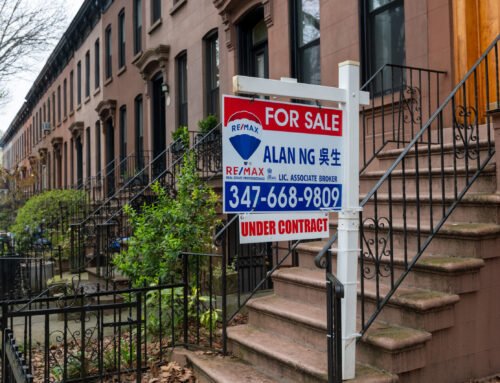Last winter, Gail Orlowski packed her belongings, sold her car and moved to Boulder from Wisconsin.
Orlowski’s daughter has lived in Boulder for about two decades and is raising her family here, and Orlowski had visited regularly with her late husband. She moved into High Mar, affordable housing for adults 55 or older that is within walking distance of her daughter’s home.
She has created an art studio in one of the bedrooms in her two-bedroom apartment — the $1,400 monthly rent of which she covers with Social Security benefit — and found a community.
“I’ve become friendly with many people, and I really enjoy the mass transportation, the bus service and the Via vans that come by,” Orlowski said.
The development was funded in part with money from the city’s inclusionary housing fund, into which residential developers pay.
There is a recurring policy debate in Boulder over whether cash-in-lieu is a good option for developers who would prefer to give money to the city rather than build and operate affordable housing, but Boulder’s affordable housing leaders say the influx of money helps them secure more affordable housing in the city than they would be able to otherwise.

Cliff Grassmick/Staff Photographer
Retail and housing construction at 30th Street and Pearl in Boulder on Wednesday.
440 units in five years
The city’s inclusionary housing program requires that residential developers provide 25% of total units in new developments as permanently affordable housing. For ownership projects, developers are expected to provide at least 50% of that on-site and accomplish the rest through money paid to the city, called cash-in-lieu. For rental projects, developers have various options to meet the requirement, including paying cash to the city.
Similar programs exist elsewhere in the county. In December, Longmont City Council voted 6-1 to give final approval to an ordinance that generally requires that 12% of the available square footage in a new residential development be dedicated to units affordable to low- and moderate-income buyers and renters. Developers also have the option of paying a per-square-footage fee into the city’s affordable housing fund. Lafayette also charges residential developers a per-square-footage fee that grows a trust fund for affordable-housing projects nd is considering starting to charge nonresidential developers a similar fee.
In the last five years, 19 out of every 100 units created in Boulder has been permanently affordable, and an additional 17 units have been preserved as permanently affordable. That amounts to 440 units of affordable housing that have been created or preserved.
“The city of Boulder arguably has the most successful inclusionary housing program in the country,” said Kurt Firnhaber, director of Housing and Human Services. “…The diversity of housing stock, the diversity of (area median incomes) we’re serving and the percentage of units we’re creating are all things that can be measured to look at the success of the program.”
One of critics’ frequent concerns about cash-in-lieu payments over on-site affordable housing is housing will then be concentrated in the less expensive parts of town. A map Firnhaber recently provided to city council does show some concentration in north Boulder of new affordable units, though others are dispersed across the city, and preserved affordable units also are dispersed throughout the city.
Affordable housing leaders said the money provides flexibility and the ability to combine it with other state and federal funds to create more units.
“I really understand the goal of on-site inclusionary housing and the types of integrated communities that could create within Boulder,” said Jeremy Durham, executive director of Boulder Housing Partners. “… We have a strong track record of leveraging outside resources with cash-in-lieu payments to achieve maximum number of affordable units and depth of affordability. We also have a high level of experience working with and housing Boulder’s low-income workforce and providing the services that those individuals and families need.”
Firnhaber pointed to the acquisition of Tantra Lake Apartments in south Boulder, when the city had less than a week to decide whether to support the purchase of the property and ultimately did.
“We were able to create almost 250 units of affordable housing without building anything, in an area where there is no new construction,” he said. “The cash-in-lieu gives us a lot more flexibility to take advantage of opportunities that come along to create affordable housing.”
In 2016, the city collected $936,000. In 2017, the city collected $4.4 million. Last year, the figure climbed to $13.3 million. In total, the city has collected $66.7 million since 2001.
Importance of diverse housing stock
One of the challenges in the funding is that it’s distributed through a competitive process and it is not consistent from year to year because it is dependent on what projects are coming down the pike.
“It’s like a big voodoo session of how much cash-in-lieu there is, when it’s coming in and how it will be dispersed,” said Mary Duvall, executive director of Thistle, a private nonprofit that develops, manages and preserves affordable housing.
Beyond that, since 2008, the environment in the area has also shifted toward rental units.
“Before the market shifted, we were getting more of a balance of affordable home ownership units and rental units,” Firnhaber said. “And now that balance has shifted almost completely to rental units.”
Some developers, like Scott Holton, suggested Boulder could do more to incentivize affordable housing development, in addition to requiring it through regulation.
“If this community was serious about affordable housing, there are no-cost or low-cost tools at our disposal to meet our goals,” Holton said. “We could absolutely incentivize developers like myself or others to try to make every project an affordable housing project by creating a predictable approval process, potentially an expedited approval process for affordable housing and create funding mechanisms in this community.”
He suggested methods such as a dedicated tax or a waiver of permit and impact fees, as well as an expedited entitlement process for affordable housing development. As it stands, that process to get a project approved by the city takes years and is the same whether the development is affordable or market-rate — a delay that can be costly for developers.
Duvall agreed that the burden could be spread further than the development community.
“It just doesn’t feel appropriate to have only the development community paying for affordable housing,” Duvall said. “There’s no basis in the argument that it doesn’t cost people anything to develop it.”
Firnhaber echoed their comments, noting the risk developers take to develop affordable housing.
“We’ve really created a very regulatory approach to it without any incentives to create affordable housing,” Firnhaber said. “That’s certainly something we could work on if we were given direction by city council that that was a priority of theirs.”
Despite all that, Holton said he supports the city’s inclusionary housing ordinance.
“Because our real estate is in such short supply, there’s actually no market incentive for developers to develop affordable housing,” Holton said. “I’m in favor of the ordinance that requires inclusionary housing because having a diverse housing stock is a really critical part of a vibrant local economy.”
Duvall said the program is working well, and the large amount of funds coming into the city is an important part of the funding mix.
“I’ve worked in a lot of places and to have local funds is a wonderful advantage,” Duvall said. “It definitely has provided a lot of affordable housing in Boulder.”






Leave A Comment